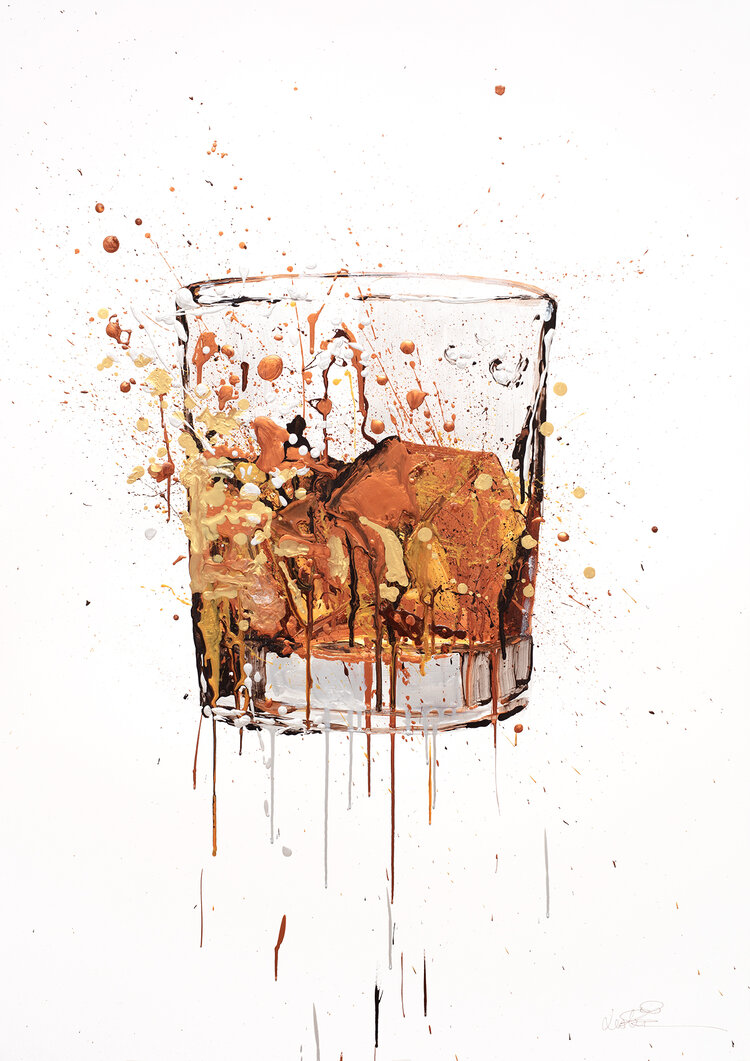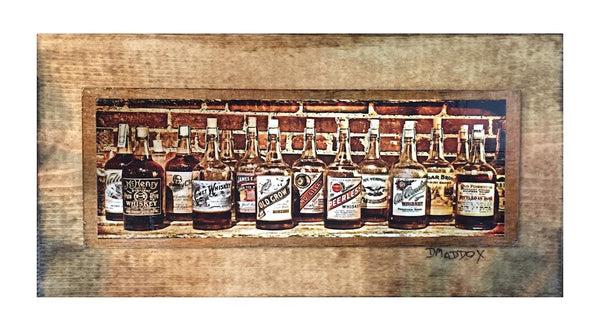Revealing the Elegance of Bourbon Art: A Tribute to Craft Distillers
Revealing the Elegance of Bourbon Art: A Tribute to Craft Distillers
Blog Article
The Relevance of Whiskey Art in Celebrating Heritage and Craftsmanship in the Beverage Industry
The complex relationship in between whiskey art and the event of heritage and workmanship within the beverage market can not be overemphasized. Via thoughtfully created containers and labels, bourbon brand names envelop their historic origins and the artisanal skills that define their manufacturing techniques. This artistic measurement not only improves market appeal however additionally serves as a conduit for cultural storytelling, fostering a much deeper link between the customer and the craft. As we discover the different facets of this subject, fascinating inquiries regarding the impact of modern-day patterns on traditional methods develop, triggering additional examination.
The Historic Roots of Whiskey
At the heart of bourbon's attraction exists an abundant tapestry of historic roots that trace back to old people. The beginnings of scotch can be connected to the purification methods of the Sumerians and Babylonians around 2000 BCE, where early forms of fermented grain beverages started to arise. It was in the Middle Ages that the art of purification evolved substantially, especially in Ireland and Scotland, leading to the development of whiskey as we know it today.
The term "scotch" itself derives from the Gaelic word "uisce beatha," meaning "water of life." This expression underscores the social importance of scotch in Celtic cultures, where it was frequently related to rituals, celebrations, and common bonding. By the 15th century, distillation became an identified craft within monastic neighborhoods, paving the means for the facility of legal distilleries.
As profession paths expanded, scotch's appeal grew, going beyond local limits and recording the passion of lovers worldwide. Realism Art. This historic trip reflects not only the craftsmanship behind whiskey production however additionally its important function in social and social contexts, noting it as a significant beverage throughout history
Artistic Expression in Branding
Bourbon branding stands as a compelling crossway of artistry and business, where aesthetic identity plays a critical role fit consumer perception. The appearances of bourbon labels, packaging, and advertising and marketing materials show not just the brand's tale but also its core values and heritage. With imaginative expression, distilleries communicate a narrative that reverberates with consumers, evoking feelings and triggering links.
Making use of shade, typography, and imagery in branding offers to separate items in a saturated market. Traditional motifs might stimulate a sense of authenticity and workmanship, while modern styles can represent development and forward-thinking. This calculated artistic instructions improves brand name recognition and loyalty, permitting customers to forge an individual relationship with the bourbon they select.
Furthermore, creative expression in branding frequently serves as a celebration of regional heritage. Distilleries frequently include regional icons or historical recommendations into their styles, producing a feeling of area that invites consumers to take part in a broader social experience. Eventually, the artistry behind whiskey branding not just enhances aesthetic allure yet also improves the overall narrative of the brand name, promoting a deeper admiration for the workmanship and heritage ingrained in each bottle.
Workmanship in Container Style
The virtuosity evident in bourbon branding prolongs beyond visual identity to encompass the workmanship entailed in container layout. Each container serves as a vessel not just for the spirit within, but likewise for the story it informs regarding its beginning, quality, and practice. The layout procedure calls for thorough attention to information, as aspects such as form, product, and closure add substantially to the overall assumption of the bourbon.
Craftsmanship in container style entails choosing premium glass that can improve the scotch's color and clarity, while also supplying a tactile experience for the customer. The shape of the bottle click for info have to be both cosmetically appealing and practical, often showing the heritage of the brand name. Lots of distilleries select distinct forms or embossed logo designs that stimulate a feeling of authenticity and background.
Moreover, the tag layout and typography play a crucial role in interacting the brand's narrative. Bourbon Art. A well-crafted bottle not just captivates the consumer's eye however also strengthens the brand name's commitment to top quality and practice. In this method, the workmanship of bottle design ends up being an essential element of the scotch experience, merging artistry with an extensive respect for heritage
Cultural Relevance of Bourbon Art
Commemorating practice and workmanship, the social importance of bourbon art transcends simple aesthetic appeals, intertwining with the social and historic narratives of the regions from which it comes from. Each container works as a canvas, showing the unique tales, folklore, and practices that have shaped regional whiskey-making practices. The detailed styles often show the heritage of the distillers, incorporating icons and motifs that reverberate with the society and worths of their areas.

In addition, whiskey art plays a crucial role in public celebrations and events, working as a tangible link between individuals and their shared experiences. By valuing the artistry in bourbon packaging, consumers cultivate a much deeper understanding and respect for the craft, eventually enhancing their satisfaction of the beverage itself.
Modern Trends in Scotch Presentation
In recent times, the discussion of bourbon has evolved to reflect contemporary tastes and trends while still recognizing conventional craftsmanship - Realism Art. Distilleries are significantly focusing on visual aspects that improve the overall drinking experience, connecting the void in between heritage and modernity
Innovative container designs have actually emerged, typically integrating lasting products and artistic tags that inform engaging tales. Several brands now team up with helpful resources neighborhood artists, infusing their products with distinct visual expressions that resonate with customers. In addition, limited-edition releases are typically packaged in collectible containers, including worth and allure for lovers.
Conclusion
In conclusion, whiskey art offers as an important channel for revealing the heritage and workmanship inherent in the drink sector. With detailed branding, cutting-edge container designs, and culturally substantial artistic aspects, scotch brands properly recognize their traditions and link with customers.


Workmanship in bottle design involves selecting high-grade glass that can boost the bourbon's shade and clarity, while additionally providing a responsive experience for the consumer. In this way, the workmanship of container style becomes a vital aspect of the whiskey experience, combining artistry with a profound respect for heritage.
In final thought, bourbon art serves as a crucial channel for revealing the heritage and workmanship inherent in the drink industry.
Report this page